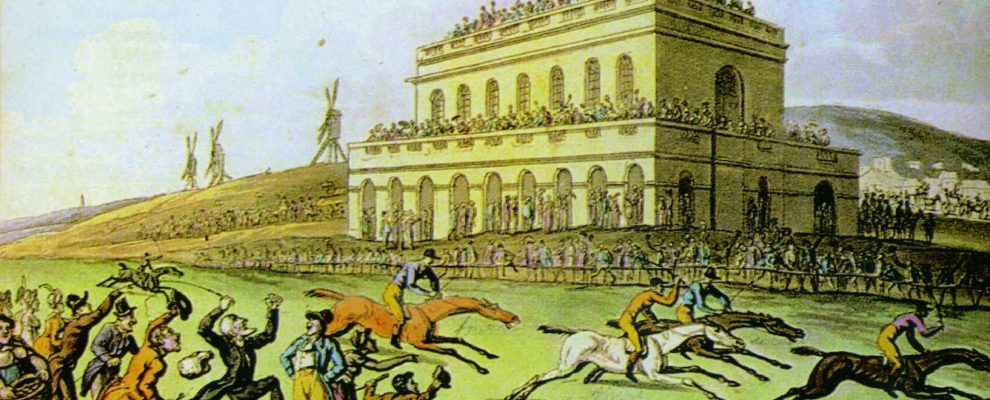Horse racing offered the irresistible combination of the thrill of the race, the highs and lows of gambling and a space for dynamic social interaction. Horses were invariably owned by members of the aristocracy or gentry, and races were run for gold or silver cups – the prestige of winning often being more important than the value of the prize. Spectators would gamble furiously on races, bets being conducted between individuals at the ‘betting post’ – bookmakers did not emerge until towards the end of the eighteenth century. In a bid to further entice audiences, and crucially bring the wealthy gentry to town, race days would often coincide with Assizes.
York has a long tradition of horse racing. As early as 1708 the Corporation recognised the ‘advantage and profit’ that racing would bring to the city and accordingly approved that land offered by Sir William Robinson on Clifton and Rawcliff Ings could be used as a course. From these early beginnings and capitalising on York’s thriving leisure industry, the Corporation had land on the Knavesmire drained and on the 16 August 1731 racing was inaugurated on the new course with a six-day meet. Further developments followed in 1755 when a new grandstand designed by John Carr was built under the impetus of Lord Rockingham and sponsored by benevolent local patrons such as the Fairfaxes.

Source: In Pursuit of Pleasure: Entertaining Georgian Polite Society (Fairfax House, 2016)
